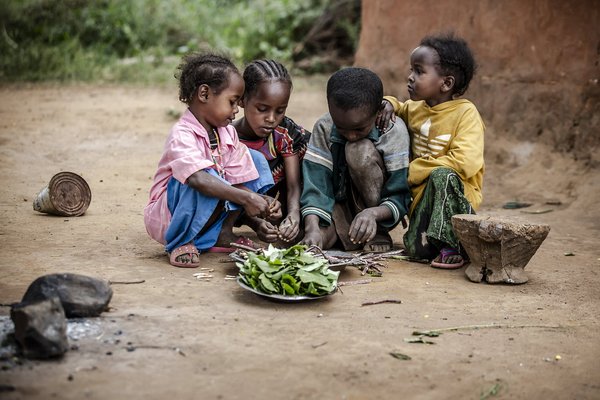 Read this article in French
Read this article in French- Share this article
- Subscribe to our newsletter
Stepping up the fight against child wasting
In November 2022, the Food and Agriculture Organization of the United Nations (FAO) launched a new child wasting prevention action plan. Enhancing nutrition in emergency agriculture responses and building resilience in the most vulnerable populations can break the vicious cycle of distress that underlies child wasting, FAO says.
Child wasting persists at alarming rates. In 2020, 47 million children were wasted. The lingering effects of the COVID-19 pandemic shutdowns – and now the food and fuel price crisis – are exacerbating the situation, worsening poverty, food insecurity and malnutrition for millions of people.
FAO has committed to ensuring that infants are breastfed and that children have access to an adequate and diverse diet in the first years of their lives. It wants to do this by supporting agrifood systems that provide healthy and nutritious food to meet the needs of children and women.
To implement the plan, FAO needs USD 500 million between 2023 and 2024 to assist one million households in the 15 most-affected countries. These countries are home to 27 million children in severe food insecurity and at high risk of becoming wasted. They are: Afghanistan, Burkina Faso, Chad, Democratic Republic of the Congo, Ethiopia, Haiti, Kenya, Madagascar, Mali, the Niger, Nigeria, Somalia, South Sudan, the Sudan and Yemen.
FAO’s action plan will deliver three key outputs:
- Agrifood system interventions to prevent child wasting will be scaled up. FAO will focus on small-scale farming and home gardening, small animal husbandry, food and nutrition education (including support for breastfeeding, and infant and young child feeding), food safety measures (including animal treatment, food handling, storage and minimal processing), and cash-based interventions such as cash+.
- Skills and knowledge on gender-sensitive and nutritious production will be enhanced. To maximise the nutritional impact, FAO’s response will promote the production and consumption of nutrient rich crops and high nutritious livestock products (iron, vitamins A and C, zinc), which also provide energy and protein. Support will be given to a combination of productive and income-generating activities in order to diversify livelihoods, provide more regular sources of income, and protect and develop productive assets in rural areas.
- Food security analysis, coordination and information management will be ensured. The constant monitoring of the food security situation and the integration of food and dietary data is key to understanding the risk factors of child wasting and supporting and evaluating tailored preventive strategies.
This strategic approach will be implemented in close collaboration and coordination with national governments and the United Nations agencies and partners.
The new plan of action will contribute to the Global Action Plan on Child Wasting, commissioned by the Secretary-General of the United Nations, António Guterres, in 2019. The plan brought together five UN agencies: FAO, the Office of the High Commissioner for Refugees (UNHCR), the United Nations Children’s Fund (UNICEF), the World Food Programme (WFP) and the World Health Organization (WHO).
(FAO/ile)
Read more on the FAO website





Add a comment
Be the First to Comment